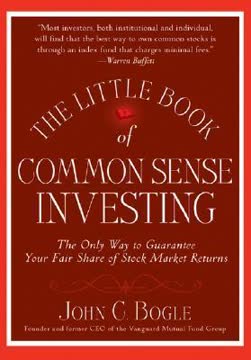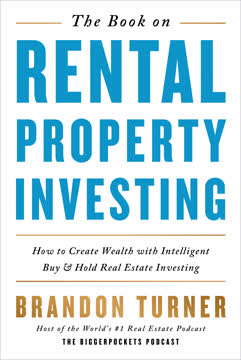Key Takeaways
1. Financial independence is about freedom, not just money
You can afford anything, but you can't afford everything.
Freedom over consumerism. Financial independence is not about accumulating wealth for its own sake, but about gaining the freedom to live life on your own terms. It's about having the ability to choose how you spend your time and energy, rather than being forced to trade your hours for dollars. This mindset shift is crucial for those seeking early retirement.
Redefining retirement. Traditional retirement often implies withdrawing from life, but early retirement through financial independence is about engaging more fully with what matters most to you. It could mean pursuing passion projects, spending more time with family, or contributing to causes you care about. The goal is to reach a point where work becomes optional, allowing you to design a life that aligns with your values and aspirations.
2. Real estate investing offers unique advantages for early retirement
Real estate investing is the I.D.E.A.L. investment.
I.D.E.A.L. benefits. Real estate investing provides five key advantages that make it particularly suited for early retirement:
- Income: Regular cash flow from rental properties
- Depreciation: Tax benefits that shelter income
- Equity: Tenants pay down your mortgage over time
- Appreciation: Property values tend to increase over the long term
- Leverage: Ability to control larger assets with a smaller initial investment
Control and timing. Unlike many other investment vehicles, real estate allows investors to have direct control over their assets and the timing of their returns. This control can be crucial for those planning an early exit from the workforce, as it provides more flexibility in generating income and building wealth on a specific timeline.
3. Create a clear financial independence number and plan
W x r = E
Define your target. Your financial independence number is the amount of wealth needed to generate enough passive income to cover your expenses. The formula is simple: Wealth (W) multiplied by your expected return (r) should equal your annual expenses (E). This clarity helps focus your efforts and measure progress towards early retirement.
Tailor your approach. Everyone's financial independence journey is unique. Consider factors like:
- Your current wealth stage (survival, stability, saver, growth, or withdrawal)
- Your risk tolerance and preferred investment strategies
- Your desired lifestyle and spending habits in retirement
- The timeline you're working with to reach your goals
By clearly defining your target and understanding your personal situation, you can create a tailored plan that maximizes your chances of success.
4. Implement starter strategies like house hacking to build wealth
House hacking simply means that you live in a residence that can also produce income.
Leverage your primary residence. House hacking is a powerful strategy for beginners to start building wealth through real estate. By living in a multi-unit property or renting out part of your home, you can:
- Reduce or eliminate your housing expenses
- Build equity in a property while someone else pays the mortgage
- Gain hands-on landlord experience
- Qualify for owner-occupied financing with better terms
Creative variations. House hacking isn't limited to multi-unit properties. Consider:
- Renting out spare bedrooms
- Converting a garage or basement into a rental unit
- Offering short-term rentals through platforms like Airbnb
- Renting out parking spaces or storage areas
These strategies allow you to start building wealth and passive income streams with minimal upfront investment, accelerating your path to financial independence.
5. Use primary wealth-building plans to accelerate your journey
The Rental Debt Snowball Plan is a way to relatively quickly own a free-and-clear (that is, no debt) portfolio of rental properties that produces enough income to cover some or all of your financial independence number.
Strategic growth. As you gain experience and capital, implement more advanced wealth-building strategies:
- Rental Debt Snowball: Aggressively pay off properties to increase cash flow
- Buy and Hold: Accumulate properties for long-term appreciation and income
- BRRRR (Buy, Rehab, Rent, Refinance, Repeat): Recycle your capital to acquire multiple properties
- Trade-Up Plan: Use 1031 exchanges to defer taxes and acquire larger, more profitable properties
Synergistic approach. Combine multiple strategies to maximize your results. For example, you might start with house hacking, transition to the BRRRR method to acquire more properties, and then implement the Rental Debt Snowball to accelerate your path to owning free-and-clear rental properties that produce significant passive income.
6. Develop a sustainable withdrawal strategy for early retirement
Don't touch the principal.
Income floor + upside investing. Create a sustainable withdrawal plan by:
- Establishing a safe, steady income floor to cover basic expenses (e.g., through free-and-clear rental properties)
- Investing for upside potential to address inflation and future uncertainties
- Diversifying income sources to increase security and flexibility
Optimize retirement accounts. Strategically use retirement accounts to support your early retirement:
- Implement Roth conversion ladders to access funds before traditional retirement age
- Utilize Health Savings Accounts (HSAs) as a flexible, tax-advantaged investment vehicle
- Consider 72(t) distributions for penalty-free early withdrawals from retirement accounts
By carefully planning your withdrawal strategy, you can ensure a sustainable income stream throughout your early retirement years while maintaining the potential for long-term growth.
7. Build backup plans and invest in yourself for true security
Be like the bird / That, pausing in flight / While on boughs too slight, / Feels them give way / Beneath her, and yet sings, / Knowing she hath wings.
Create financial lifeboats. Develop backup plans to increase your sense of security:
- Expense reduction strategies (e.g., geographic arbitrage, downsizing)
- Income-generating backup plans (e.g., part-time work, freelancing, selling assets)
- Flexibility in lifestyle and spending habits
Invest in your greatest asset: you. True security comes from within. Continuously invest in:
- Physical health: Regular exercise, proper nutrition, and adequate rest
- Mental well-being: Continuous learning, mindfulness practices, and stress management
- Relationships: Nurturing connections with family, friends, and professional networks
By developing a robust set of backup plans and continuously investing in yourself, you'll build the resilience and adaptability needed to thrive in early retirement, regardless of external circumstances.
Last updated:
FAQ
What's Retire Early With Real Estate about?
- Focus on Early Retirement: The book emphasizes using real estate investing as a means to achieve early retirement or financial independence.
- Real Estate as a Tool: Chad Carson presents real estate as an ideal vehicle for building wealth and generating passive income.
- Personal Journey: It shares Carson's personal experiences and lessons learned over fifteen years of investing in real estate.
Why should I read Retire Early With Real Estate?
- Comprehensive Guide: The book serves as a detailed roadmap for anyone interested in real estate investing, especially those looking to retire early.
- Real-Life Examples: Carson includes profiles of real estate early retirees, providing real-world insights and inspiration.
- Actionable Steps: It is filled with actionable advice and strategies, such as the BRRRR method and house hacking.
What are the key takeaways of Retire Early With Real Estate?
- I.D.E.A.L. Investment Benefits: The book outlines the I.D.E.A.L. acronym—Income, Depreciation, Equity, Appreciation, and Leverage—as core benefits of real estate investing.
- Financial Independence Number: Carson emphasizes calculating your Financial Independence Number to set clear financial goals.
- Focus on Savings Rate: A high savings rate is crucial; it's not about how much you earn but how much you save.
What is the BRRRR method in Retire Early With Real Estate?
- Buy, Rehab, Rent, Refinance, Repeat: This strategy involves acquiring rental properties without needing a large amount of cash for each purchase.
- Cash Recycling: It allows investors to recycle their cash, enabling them to acquire multiple properties over time.
- Long-Term Wealth Building: Investors can build a portfolio of cash-flowing rental properties while minimizing cash tied up in each investment.
How does house hacking work in Retire Early With Real Estate?
- Living for Free: House hacking involves living in a property while renting out part of it to cover mortgage costs.
- Types of Properties: Carson suggests using duplexes, triplexes, or single-family homes with spare bedrooms for house hacking.
- Financial Benefits: It accelerates the path to financial independence by reducing housing costs, allowing for greater savings.
What are the five wealth stages in Retire Early With Real Estate?
- Survival Stage: Focus on earning enough to cover basic expenses and build a financial foundation.
- Stability Stage: Create a financial cushion by paying off debts and building an emergency fund.
- Saver Stage: Maximize savings rate, often saving 25% or more of income, to prepare for investments.
- Growth Stage: Actively invest in real estate and other assets to grow wealth.
- Withdrawal Stage: Begin to withdraw income from investments to support your lifestyle.
What is the Money-Life Manifesto in Retire Early With Real Estate?
- Guiding Principles: Encourages prioritizing values and life aspirations over money.
- Living with Purpose: Align financial decisions with what truly matters to lead a fulfilling life.
- Avoiding the Rat Race: Break free from the traditional work-for-money cycle to pursue meaningful projects.
What is the Rental Debt Snowball Plan in Retire Early With Real Estate?
- Debt Reduction Strategy: Focus on paying off the smallest debts first to build momentum.
- Increased Cash Flow: Eliminating debt increases cash flow from rental properties.
- Long-Term Wealth Building: Helps achieve financial independence faster and positions for long-term wealth accumulation.
How does the Buy and Hold Plan work in Retire Early With Real Estate?
- Long-Term Investment Strategy: Involves purchasing rental properties and holding them for an extended period.
- Compounding Benefits: Property values typically increase over time, providing steady cash flow.
- Management Systems: Requires effective management systems for tenants and property maintenance.
What is the Trade-Up Plan in Retire Early With Real Estate?
- Tax-Optimized Growth: Sell properties and reinvest profits into larger or more profitable properties while minimizing tax liabilities.
- Compounding Wealth: Leverage equity from existing properties to acquire more assets.
- Flexibility in Investments: Adapt to changing market conditions and personal financial goals.
How can I calculate my financial independence number as suggested in Retire Early With Real Estate?
- Estimate Annual Expenses: Determine how much money you need annually to cover living expenses.
- Determine Required Wealth: Use the formula W x r = E, where W is wealth, r is cash return, and E is annual expenses.
- Adjust for Future Needs: Consider inflation and potential lifestyle changes to ensure the number remains relevant.
What are some common obstacles in real estate investing discussed in Retire Early With Real Estate?
- Finding Good Deals: Identifying properties that offer good returns requires market research and networking.
- Managing Properties: Property management can be challenging; hiring managers can alleviate burdens.
- Financial Risks: Be aware of risks associated with leveraging debt and manage debt levels carefully.
Review Summary
Retire Early with Real Estate receives mostly positive reviews, with readers praising its comprehensive overview of real estate investing strategies for early retirement. Many appreciate the practical advice, case studies, and actionable steps provided. Some criticize the book for being too high-level or US-specific. Readers find value in the personal finance insights and the author's approachable writing style. While some feel it lacks detailed implementation guidance, others consider it an excellent introduction to using real estate for financial independence.
Similar Books









Download PDF
Download EPUB
.epub digital book format is ideal for reading ebooks on phones, tablets, and e-readers.




